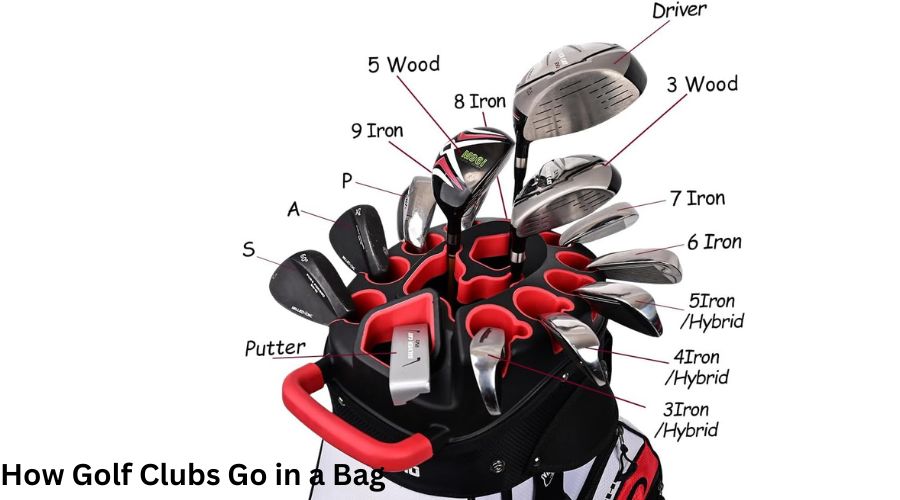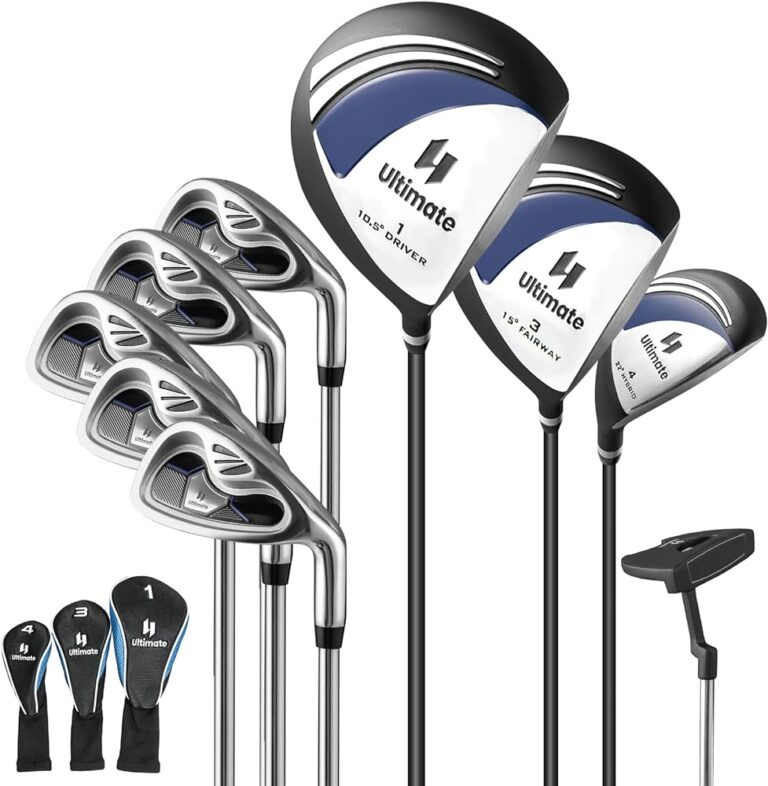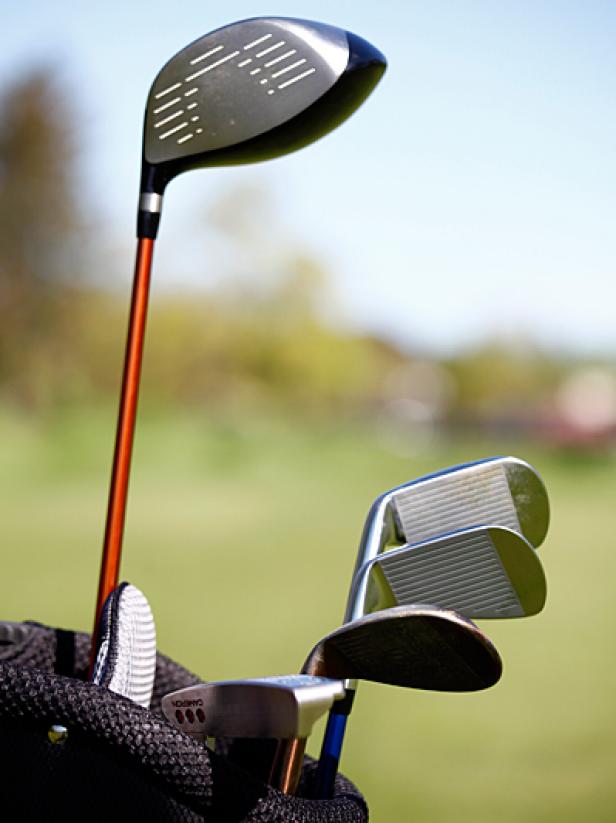A golf bag typically contains 14 clubs, which are used to hit different types of shots on the golf course. These clubs are divided into three categories: woods, irons, and wedges.
Woods are used for longer shots, irons for mid-range shots, and wedges for short shots around the green. The clubs in a golf bag must conform to the rules set by the United States Golf Association (USGA) and the Royal and Ancient Golf Club of St.
Andrews (R&A), which govern the sport internationally. The number of clubs allowed in a bag is limited to 14 to prevent players from carrying too many clubs and to ensure fair play. We will explore the different types of clubs in a golf bag and their uses, and provide tips on how to choose the right clubs for your game.
Contents
Introduction To Golf Clubs
Golf clubs are essential tools for any golfer, each serving a specific purpose on the course. Understanding the various clubs and their uses is crucial for improving your game. In this article, we will explore the purpose of clubs in golf and delve into the historical context of club limitations in the sport.
Purpose Of Clubs In Golf
Each golf club is uniquely designed to perform specific functions on the course. From driving the ball long distances to making precise shots near the green, different clubs are tailored to meet the diverse demands of the game. Understanding the purpose of each club is fundamental to mastering the sport.
Historical Context Of Club Limitations
The history of golf is intertwined with the evolution of club limitations. In the past, golfers were not restricted in the number of clubs they could carry, leading to excessively large bags and burdening caddies. To address this, regulations were put in place to limit the number of clubs a player could carry, shaping the modern standard of 14 clubs per bag.
Regulations On Golf Clubs
Regulations on Golf Clubs:
Usga Rules On Club Numbers
The USGA has set guidelines on the number of clubs a player can carry in a golf bag to maintain fairness and consistency in the game.
Impact On Players And Caddies
Limiting the number of clubs not only affects players by requiring strategic club selection but also eases the burden on caddies, preventing exhaustion and enhancing the overall golfing experience.
Types Of Clubs In A Golf Bag
When it comes to golf, having the right clubs in your bag is essential for a successful game. A standard golf bag is allowed to hold a maximum of 14 clubs, each serving a specific purpose and catering to different aspects of the game. Understanding the types of clubs in a golf bag and their specific roles can significantly impact your performance on the course.
Overview Of Different Clubs
Before delving into the specific roles of each club, it’s important to have a general overview of the different types of clubs that are typically found in a golf bag. The 14 clubs can be broadly categorized into three main types: woods, irons, and wedges, along with the putter, which is a crucial club for every golfer. Each type of club is designed to be used in various situations and distances, catering to the diverse demands of the game.
Specific Roles Of Each Club
Understanding the specific roles of each club in your golf bag is fundamental to making informed decisions on the course. Here’s a breakdown of the primary clubs and their specific functions:
- Woods: These clubs are designed for long-distance shots, typically used to tee off on longer holes. They are numbered from 1 to 5, with lower numbers indicating lower lofts and longer distances.
- Irons: Irons are versatile clubs used for various distances and scenarios on the course. Numbered from 3 to 9, they are suitable for mid-range shots and approach shots to the green.
- Wedges: Wedges are specialized for shorter and more accurate shots, such as approach shots, chip shots, pitch shots, bunker shots, and lob shots. They include the pitching wedge, gap wedge, sand wedge, and lob wedge.
- Putter: The putter is essential for rolling the ball into the hole on the green. It is specifically designed for short and precise strokes, making it crucial for achieving success on the putting surface.
Essential Clubs For Your Golf Bag
In a golf bag, you’ll find 14 essential clubs, each serving a unique purpose. From drivers for distance to putters for precision, these clubs are crucial for a successful round on the course. Understanding the role of each club can significantly improve your golf game.
Must-have Clubs For Beginners
As a beginner, it’s essential to have the right clubs in your golf bag to help you improve your game. Here are the must-have clubs:
- Driver: The longest club in the bag, used for hitting off the tee.
- Fairway Woods: Ideal for long shots from the fairway or rough.
- Irons (5-9): These are versatile clubs used for various distances and situations on the course.
- Pitching Wedge: Great for shorter approach shots and getting out of bunkers.
- Putter: Essential for precision on the green.
Advice For Experienced Golfers
Experienced golfers should consider adding specialized clubs to their bag to enhance their game. Here are some recommendations:
- Sand Wedge: Useful for getting out of sand traps with ease.
- Hybrid Clubs: These versatile clubs combine the features of irons and woods, providing flexibility in various situations.
- Lob Wedge: Perfect for high, soft shots that need to clear obstacles.
- Additional Irons: Consider adding more specialized irons, such as a 3 or 4 iron, for specific distances.
Having the right combination of clubs in your bag can significantly impact your performance on the golf course. Whether you’re a beginner or an experienced player, it’s important to tailor your club selection to suit your individual playing style and needs.
Customizing Your Club Selection
When it comes to golf, having the right set of clubs can make a significant difference in your game. Customizing your club selection allows you to tailor your bag to your individual playing style, ensuring that you have the right tools for every shot. From drivers to putters, each club serves a specific purpose, and knowing how to balance your golf bag can improve your performance on the course.
Factors To Consider
When customizing your club selection, there are several factors to consider. These include your skill level, playing style, and the specific characteristics of the golf course you frequent. Understanding these factors will help you make informed decisions about which clubs to include in your bag.
Balancing Your Golf Bag
It’s essential to balance your golf bag with a mix of clubs that cover various distances and shot types. An effective way to achieve this balance is by including a combination of drivers, woods, irons, and wedges. Additionally, having the right putter for your putting style is crucial for success on the greens. By carefully selecting and arranging your clubs, you can ensure that you have the versatility needed to handle different situations on the course.
Technical Specifications Of Clubs
Golf clubs are designed to serve specific purposes and are carefully engineered to deliver optimal performance on the golf course. Understanding the technical specifications of clubs is crucial for golfers aiming to improve their game and make informed decisions about club selection. From the design principles to the latest innovations in club technology, each aspect contributes to the overall performance of the clubs in a golfer’s bag.
Understanding Club Design
Club design encompasses various elements, including the clubhead, shaft, and grip. The clubhead’s size, shape, and material composition directly impact factors such as forgiveness, distance, and control. The shaft’s flexibility, length, and material influence swing speed, trajectory, and feel. Additionally, the grip’s texture, size, and material contribute to comfort and control during the swing.
Innovations In Club Technology
Advancements in club technology have revolutionized the way golf clubs perform. From the introduction of adjustable hosels and weighting systems to the utilization of advanced materials such as carbon fiber and titanium, these innovations have allowed golfers to customize their clubs for enhanced playability and tailored performance. Furthermore, the integration of data-driven design processes and 3D modeling has enabled manufacturers to optimize club designs for maximum efficiency and effectiveness on the course.
Maintaining And Upgrading Your Clubs
When it comes to golf, maintaining and upgrading your clubs is essential for optimal performance on the course. Let’s delve into some helpful tips to keep your clubs in top condition.
Routine Maintenance Tips
- Keep your clubs clean by wiping them down after each round.
- Inspect the grips regularly for wear and tear.
- Check the clubheads for any signs of damage or rust.
- Store your clubs in a cool, dry place to prevent warping.
When To Upgrade Your Clubs
- If your clubs no longer suit your playing style or skill level.
- When advancements in club technology offer performance benefits.
- After a significant change in your swing or physical abilities.
- When your current clubs show signs of wear that impact performance.
Practical Tips For Club Usage
Discover the essential 14 clubs in a golf bag for optimal performance on the course. From drivers to putters, each club serves a specific purpose to help improve your game. Understanding the role of each club can enhance your strategy and overall golfing experience.
Golfers must master the art of using their clubs effectively to enhance their performance on the course. Here are some practical tips to help you make the most of your golf clubs:Maximizing Club Performance
| Club Type | Usage |
|---|---|
| Driver | Use for tee shots on long holes, ensuring a powerful and accurate drive. |
| Woods | Optimal for long fairway shots, providing distance and control. |
| Irons | Utilize for various distances on the fairway, with different irons for different yardages. |
| Wedges | Perfect for short approach shots, chipping, pitching, and bunker play. |
| Putter | Essential for precision on the putting green, allowing for accurate and controlled putting strokes. |
- Maintain your clubs: Regularly clean and inspect your clubs to ensure they are in optimal condition.
- Understand your distances: Practice and understand the distance each club can cover to make informed club selections.
- Consider the lie: Adjust your club selection based on the lie of the ball to achieve the best results.
- Adapt to the weather: Factor in weather conditions when using your clubs, especially when it comes to wind and rain.
Common Mistakes To Avoid
- Over-reliance on a single club: Avoid using the same club for all shots, as each club has a specific purpose.
- Ignoring club selection: Selecting the wrong club for a shot can lead to inaccurate distances and poor results.
- Neglecting club maintenance: Failing to clean and maintain your clubs can lead to diminished performance.
- Lack of practice: Inadequate practice with different clubs can hinder your ability to use them effectively on the course.
Frequently Asked Questions
How Do You Organize A 14 Top Golf Bag?
To organize a 14 top golf bag, start by placing your driver and fairway woods in the top slots, followed by your hybrid clubs. Next, place your irons in descending order from the highest numbered club to the lowest. Put your wedges in the remaining slots, with the sand wedge and lob wedge closest to the putter.
Make sure to evenly distribute the weight of the clubs to prevent damage to the bag.
Are 3 Hybrid And 5 Wood The Same?
No, 3 hybrid and 5 wood are not the same. They are both used for long shots, but 5 wood has a longer shaft and a larger club head, making it easier to hit from the fairway, while 3 hybrid is more versatile and can be used from different lies.
Choose the one that suits your game.
Does A 4 Hybrid Go Further Than A 4 Iron?
A 4 hybrid typically goes further than a 4 iron due to its design and technology.
Why Can You Only Carry 14 Clubs?
Golfers can only carry 14 clubs to keep play fair and manageable for players and caddies.
Conclusion
Understanding the 14 clubs in a golf bag is essential for mastering the game. Each club serves a specific purpose, aiding players in various situations on the course. By knowing your clubs and their functions, you can optimize your performance and enjoy a more fulfilling golfing experience.





